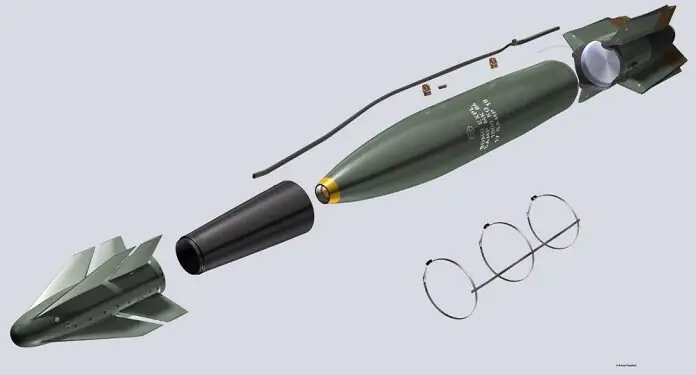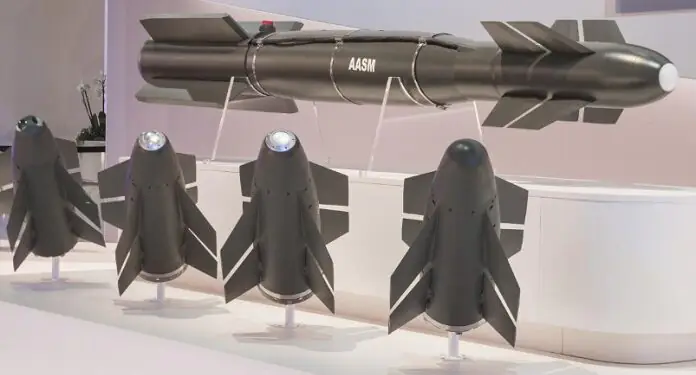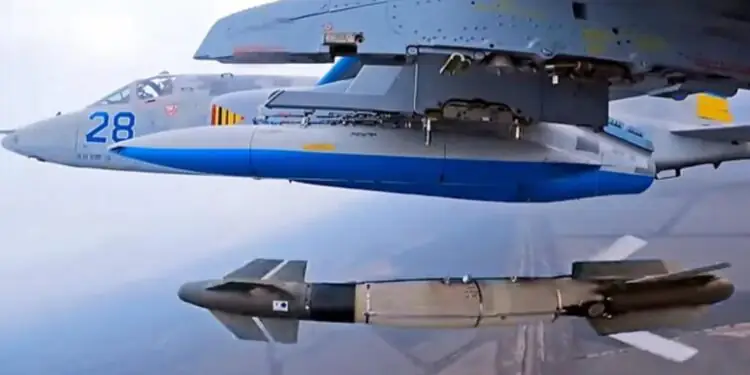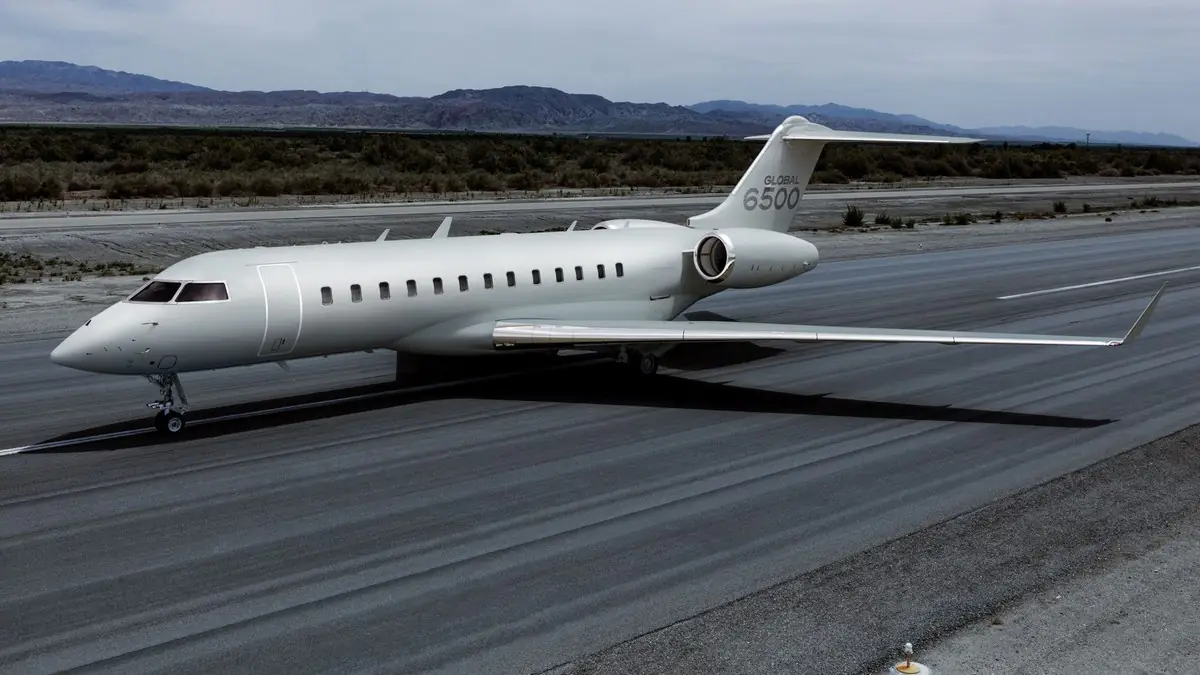Almost every week, reports emerge of successful use by Ukrainian aviation of French-made precision-guided bombs (PGBs), known as AASM or HAMMER. The first is specifically French, standing for Armement Air-Sol Modulaire, meaning “modular air-to-ground weapon.” The second is the export designation in English: Highly Agile Modular Munition Extended Range.
Conceptually, these bombs are similar to American PGB families like Paveway or JDAM – they are essentially modifications of standard unguided bombs with added guidance modules. However, French engineers have incorporated several unique solutions, giving their PGBs advantages over American counterparts in certain areas. Let’s take a closer look.
Read also:
- The First American Attack Aircrafts: Development Path, Part 1
- “The Drone Drops a Grenade” – or How the Pentagon Was Embarrassed
The family includes two sizes of PGBs: AASM/HAMMER-250 and AASM/HAMMER-1000. The numbers indicate the weight in kilograms, roughly equivalent to the American 500- and 2,000-pound classes. The AASM-250 is mounted on a 227 kg Mk 82 bomb, while the AASM-1000 fits a Mk 84 (907 kg) or a BLU-109/B (874 kg). The BLU-109/B is a hardened concrete-penetrating bomb with an especially strong casing.

The AASM kit consists of two main modules – scaled for the bomb’s size: a tail section, the REK (Range Extension Kit), with deployable lifting surfaces, and a nose section containing the guidance head and control surfaces. There are three types of guidance heads, which combine to create six possible bomb variants. For clarity, I’ve summarized this in a table:
| Type of guidance heads | AASM-250 | AASM-1000 |
| Inertial-satellite | SBU-38 | SBU-21 |
| Inertial-satellite + infrared | SBU-64 | SBU-66 |
| Inertial-satellite + semi-active laser | SBU-54 | SBU-56 |

Unlike American PGBs in the Paveway and JDAM series, the AASM’s REK section can be fitted with a solid-fuel rocket motor, allowing the bomb’s range to exceed 70 km, depending on the launch altitude and aircraft speed. Another difference is a more refined aerodynamic design, which extends the range and enhances maneuverability even without the rocket motor.
The manufacturer classifies the AASM as a WLAR (Wide Launch Acceptable Region) munition, meaning it has a broader range of acceptable launch conditions than other PGBs, including a wider range of altitudes and speeds. One advantage of this is that it can be released from relatively low altitude, allowing the bomb to “hop” over natural obstacles that might conceal the launching aircraft.
When designing the guidance system for the AASM PGB, engineers at Safran deliberately avoided simply copying American solutions, creating their own guidance head configuration. The primary guidance method is satellite-based, using a 48-channel GPS receiver. To improve accuracy – and to maintain functionality in cases of GPS jamming or spoofing – the system also incorporates an HRG Crystal inertial navigation system (HRG stands for Hemispherical Resonator Gyroscope). This is a high-precision sensor for angular velocity and rotation, where resonance is induced in a silicon-glass hemisphere via electrostatic discharge. Unlike traditional INS systems, the HRG Crystal has no moving parts. Compared with laser gyroscopes, it maintains operational capability even during brief power interruptions.
The high accuracy of this gyroscope requires precise manufacturing, and only three companies worldwide produce HRG Crystal technology: Northrop Grumman in the U.S., Raytheon Anschütz – the German branch of the American firm – and Safran Electronics.
Read also:
- Thrust Reversal: How and When an Aircraft Uses Engine Braking
- Swift Beat’s Shahed Interceptor Drone: What We Know
As an additional guidance method during the terminal phase, the SBU‑64/66 variants are equipped with an infrared camera operating in the mid-wave infrared (MWIR) range. This is used when the exact coordinates of a target are unknown or when optical identification is required. The system works by matching the observed image to a stored reference, which limits its use to stationary targets.
For AASM bombs using only satellite and inertial guidance, the circular error probable (CEP) is around 10 m. Incorporating the infrared guidance head reduces this margin to approximately 1 m.
The SBU‑54/56 variants with laser guidance can engage moving targets, provided they are illuminated. Both the infrared and laser-guided versions can also operate in a “fire-and-forget” mode, relying solely on satellite and inertial navigation.
Testing of the basic AASM PGB took place in 2004–2005, and in 2007 it was officially adopted by the French Air Force. The infrared-guided version was certified in 2008, followed by the laser-guided version in 2013. Development and refinement of these bombs continue. The latest versions incorporate artificial intelligence modules, expanding their operational capabilities. For example, they include a V‑AoI (Vertical Angle of Impact) mode, where the bomb executes a “loop” before reaching the target to strike from a steep dive. There is also an air-burst option, which increases effectiveness against unarmored targets and personnel.
The French Air Force first used AASM bombs from their Rafale fighters in 2008 in Afghanistan. These bombs are considered the primary air-to-ground munition for the Rafale, though they can also be deployed from other aircraft types. Since 2020, AASM PGBs have been in service with the Indian Air Force.
In February 2025, Safran Electronics and Bharat Electronics established a joint venture in India to produce and improve AASM bombs, which were later used by the Indian Air Force in a conflict with Pakistan in May. Other operators include Egypt, Qatar, and Croatia, which acquired the bombs bundled with Rafale fighters, as well as Morocco, where upgraded Mirage F1 aircraft serve as the delivery platform.
In 2024, Ukraine joined the list of AASM users. The first announcement of deliveries came from French President Emmanuel Macron on January 16, 2024, who stated that the bombs would be supplied at a rate of 50 units per month. Integrating these bombs with Soviet-era aircraft in service with the Ukrainian Air Force poses no issues – like American JDAM bombs, the AASM does not require any modifications to the aircraft.

The first confirmed combat use of AASM bombs occurred on March 5, targeting Russian positions at the Avdiivka Coke Plant. Based on available information, the primary carriers of these bombs are MiG‑29 fighters, although in early December 2024 there was confirmation that Su‑25 attack aircraft had also been used in this role.

It’s likely – logically – that AASM bombs are also being used from French-supplied Mirage 2000‑5F fighters. The primary targets for these PGBs are command posts and concentrations of enemy personnel in buildings or other fortified positions. AASM bombs are often deployed using a climbing maneuver, allowing the aircraft to approach the target at low altitude, outside the reach of air defense systems. Based on available information, only the AASM‑250 is currently in use, although the presence of Su‑24M/MR and Mirage 2000‑5F aircraft in the Ukrainian Air Force would theoretically allow deployment of the heavier AASM‑1000 bombs as well.
The supply of AASM PGBs, like American precision-guided bombs, enables the Ukrainian Air Force to effectively use Soviet-era fighters as strike aircraft, even though these planes were not originally designed to deploy high-precision air-to-ground munitions. This is another clear example of adapting modern Western technology to the conditions of the Russia-Ukraine conflict.
Read also:








